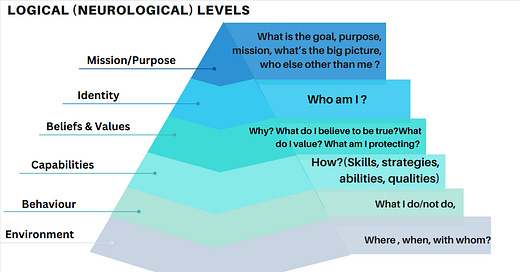What does it take to change a behavior?
How are those new year resolutions working out for you?
At “founders’ health” session we talked about behavior changes, why they are hard, and a framework / exercise to understand a more logical reasoning path to address them. The goal of the framework is to understand the current state, investigate and plan a desired state, and then introduce an intervention.
Let’s say you want to exercise every day, and that hasn’t been working out. To understand the current state:
Step 1: Start noticing the ENVIRONMENT you try to exercise in. Just observe, no judgment. Take notes about what was happening before and what often happens after your attempt to exercise. Summarize your observations as “When / Where / With whom <I try to exercise in the morning>”
Step 2: Take a note of your BEHAVIOR. Your aspiration was to do exercise as soon as you woke up, but what did you do instead? Summarize as “I do <procrastinate by responding to my work emails until I have to attend meetings for the rest of the day>”. Note that we are looking for patterns rather than one off incidents.
Step 3: Then think about how that behavior was ENABLED. This is often a strategy or lack of, some skill or lack of, or some sort of capability or lack of. Summarize as “I do this because <I feel overwhelmed by all the emails in my inbox>”. Note the lack of strategy for proper task handling and prioritization.
Step 4: Then dig deep into the BELIEF & VALUES that are behind that enabler. I like doing this as an answer to the question “what am I running from?”. This targets the insecurity directly without any sugarcoating. It immediately acknowledges that there is perhaps a limiting belief that we are looking for. Summarize as “I am running from <being seen as someone who doesn’t prioritize work>”. Then start taking that apart and separately write down the beliefs that exist in that statement. “I believe that <people who prioritize work are more valuable and respected>”. Or “I believe <how I’m perceived at work is important>”. This step might need some frank conversation with a friend or partner who would hold a mirror for you.
Step 5: Then think about the kind of person, the IDENTITY, that assumes those beliefs. “I am a <hard working person>”. Or “I’m a <person people can rely on at work>”.
Step 6: Lastly, what is a person with that identity trying to achieve? What is your MISSION? “I want <to provide for myself and my family>”.
Then the ideal future state and the corresponding intervention start by acknowledging things you don’t want to change about yourself (or it would take a long time to) like the mission and identity, and thinking that given those, what beliefs, enablers, behaviors, or environments would help you hit your exercise goal. Maybe you acquire a belief that “hard working people do also exercise”. Maybe you enable that by better task and stress management. Maybe you choose a behavior where you don’t open the work laptop until you’re done with your exercise. Maybe you change the environment by switching your exercise time to lunch time when you’re done with the emails and early meetings.
Interventions are often most effective at the “belief” level. Anything above often is too slow to change, and anything below often ends up being empty, wishful actions. The beauty of it is that you don’t even need to change your beliefs necessarily. You just need to find better ones that are consistent with who you are and what you are trying to achieve in life.




